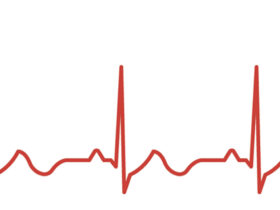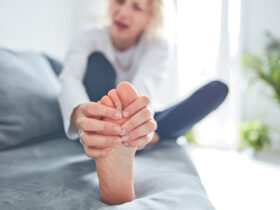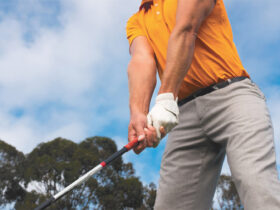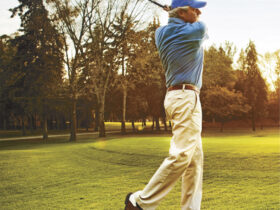By Shannon Willits, Master Pilates Educator
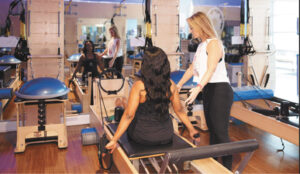 As pickleball’s popularity soars, so does the risk of injuries. With sudden pivots leading to sprains or repetitive swings causing strains, the physical demands of pickleball are catching many players off guard. Although the sport is exciting, Pickleball often pushes players—especially older adults—beyond their limits without them realizing it until injury strikes.
As pickleball’s popularity soars, so does the risk of injuries. With sudden pivots leading to sprains or repetitive swings causing strains, the physical demands of pickleball are catching many players off guard. Although the sport is exciting, Pickleball often pushes players—especially older adults—beyond their limits without them realizing it until injury strikes.
In 2023, Pickleball injuries generated more than $350 million in medical costs. According to a Journal of Emergency Medicine study, analysts predicted more than 66,750 emergency department visits and 366,000 outpatient visits linked to pickleball injuries. The most frequently reported injuries include sprains, strains, and fractures, with adults aged 50 years and older accounting for 90% of cases.1
Among these injuries are knee issues, which affect an estimated 20-30% of players. These are often due to the rapid starts and lateral movements integral to the game. Pre-existing conditions like arthritis frequently exacerbate these injuries.2,3 Shoulder problems, particularly rotator cuff injuries and tendonitis, account for around 15-20% of pickleball-related physical therapy cases, largely driven by repetitive overhead actions like serving.4,3
Wrist injuries, primarily from bracing falls or overuse, impact roughly 10% of players, while ankle sprains, resulting from quick directional changes, represent 12-18% of reported injuries.4,2 Another common ailment is tennis elbow, which affects 10-15% of players and is often caused by repetitive forearm swings.3
For those recovering from such setbacks, a balanced, low-impact exercise regimen like Pilates is crucial. Known for its emphasis on core strength, flexibility, and body alignment, Pilates complements physical therapy and improves athletic performance.
Why Pilates is Ideal After Physical Therapy
Healing is not linear. Physical therapy often lacks the time to incorporate full-body movement, making post-rehabilitation a challenging phase for maintaining and recovering progress. Pilates offers controlled movements, breathing coaching, and alignment, essential for injury recovery. Additionally, Pilates strengthens muscles without additional stress on the joints and can be tailored to specific recovery needs, like enhancing shoulder stability for a player recovering from a rotator cuff injury.
Core Strength and Stability
Core strength is essential for pickleball, supporting nearly every movement on the court, from serving to quick lateral movements. A strong core enhances balance, improves posture, and facilitates more powerful and controlled shots. Continuing to build core strength post-therapy is important. Pilates exercises like the plank, pelvic curls, and the hundreds engage the deep abdominal muscles, obliques, and lower back, providing a stable base for athletic movements and protecting against common injuries such as lower back strain.
Flexibility and Range of Motion
Flexibility is important for optimal pickleball performance. A limited range of motion can affect a player’s ability to reach for shots, serve effectively, or move swiftly across the court. Pilates emphasizes muscle lengthening alongside strengthening, which enhances flexibility. Exercises like spine stretches, leg circles, and quad stretches increase flexibility in key areas like the spine, hips, and legs. This not only aids players in moving more freely but can also improve their range of motion post-injury, such as recovery from knee or hip issues.
Improved Body Awareness and Alignment
A fundamental principle of Pilates is the emphasis on body awareness and alignment. Understanding and ensuring proper movement alignment is crucial for injury prevention. Post-therapy, athletes can develop compensatory movement patterns to protect injured areas, potentially leading to new issues. Pilates corrects these patterns by reinforcing proper alignment and balanced muscle use, reducing future injury risks.
Enhanced Balance and Coordination
Balance and coordination are critical in pickleball, especially for players recovering from injuries. Pilates exercises often incorporate balance challenges that enhance stability and coordination, essential for the quick lateral movements and direction changes in pickleball. Improved proprioception helps players maintain balance during dynamic movements, reducing the likelihood of falls or missteps.
Breath Control and Endurance
Breathing is a core component of Pilates, emphasizing deep, controlled breaths that reduce tension, improve concentration, and increase oxygen flow to muscles. For pickleball players, efficient breathing not only helps in recovery but also improves endurance on the court. Pilates teaches players to coordinate breath with movement, keeping the body energized and focused even during extended play.
Long-Term Injury Prevention
One of the most significant benefits of integrating Pilates into a post-physical therapy routine is its role in long-term injury prevention. Pilates strengthens muscles around vulnerable joints, improves flexibility, and enhances overall body mechanics. This comprehensive approach reduces the likelihood of re-injury and helps players maintain their physical health over time.
For pickleball players, this means fewer setbacks due to injuries and the ability to enjoy the sport for years more. Whether dealing with shoulder, knee, or back issues, Pilates offers a safe, effective way to keep the body strong, flexible, and resilient, ensuring optimal performance.
Maximize Your Recovery with Pilates
Pilates is indispensable for pickleball players who have completed physical therapy and wish to maintain and build upon their recovery. With its focus on core strength, flexibility, alignment, and injury prevention, Pilates provides a well-rounded approach that supports overall athletic performance and long-term health. By integrating Pilates into their regular fitness routine, players can enhance their game, reduce the risk of injury, and continue enjoying Pickleball.
Shannon Willits, Master Pilates Educator
Shannon is a Master Pilates Educator and owner of 4 local Club Pilates studios. As a career Pilates instructor and functional movement specialist, Shannon has mastered the science and art of her craft. She shares her knowledge by certifying aspiring Pilates instructors. Shannon’s unique approach to developing an apprenticeship has led to the establishment of the Southwest Florida Pilates Academy. She holds prestigious certifications in STOTT Pilates and Gyrotonic® Method, completed a fellowship in Applied Functional Science (FAFS), and is a Functional Golf Specialist.
References:
1. University of California. “As Pickleball’s Popularity Surges, Injuries Are Also
on the Rise.” University of California News, 2023, August 21).
https://www.universityofcalifornia.edu/news/pickleballs-popularity-surges-
injuries-are-also-rise
2. UCSD Today “As Pickleball’s Popularity Surges, Injuries Are Also on the Rise.”
UC San Diego Today, 2024. https://today.ucsd.edu.
3. BenchMark Physical Therapy “14 Most Common Pickleball Injuries.” Bench-
Mark Physical Therapy, 2024. https://www.benchmarkpt.com.
4. ProActive PT Clinics ProActive Physical Therapy. “Preventing and Treating
Pickleball Injuries with Physical Therapy.” ProActive Physical Therapy, 2024.
https://www.proactivept.com.




